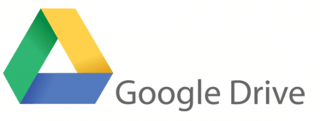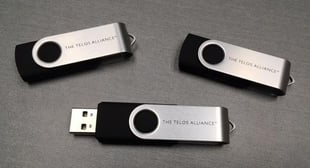Jake's Take: The Importance of Documentation and Backups | Telos Alliance
By The Telos Alliance Team on Aug 23, 2017 10:15:00 AM
 Jake's Take: The Importance of Documentation and Backups
Jake's Take: The Importance of Documentation and Backups
When new gear arrives it can get any engineer excited. Whether you are building a facility from the ground up or adding more Telos Alliance equipment to the rack, here are some helpful tips keep your facility in order.
Documentation is your friend
We all like to think our memories are exceptional, but creating and keeping accurate notes is critical. When it comes to documentation remember the two As: Accuracy and Accessibility.
Let’s begin with accuracy since inaccurate documents will lead you astray. Any type of data management software such as Google Sheets or Microsoft Excel is great for tracking facility information. Some fields we recommend including are Device Type, Physical Location, Serial Number, Wire Number, Password, License Information, IP address, and Livewire Channel Number.
Also, you should audit your data annually. Every fiscal year your accountant has to go through and make sure the books are accurate, and we should do the same with our documents.
While developing and maintaining your documentation takes time, it pays major dividends when the 2:00 AM phone call happens. You can confidently know where everything is while you work to resolve an issue because you invested the time ahead of the emergency.
Back, Back, Back It Up…
Many products now offer the ability to backup configuration files. While it is natural to make up a backup after the initial configuration you should keep backing up regularly, preferably after every time you make changes. This way in the event you do have a piece of gear fail you can quickly restore operation by porting settings to a replacement, or your repaired unit.
For products that do not offer a backup, record your adjustments as part of your documentation process. This way you have a record of how the product was configured and can quickly restore normal operation if it has to be swapped out, or set to factory defaults as part of the troubleshooting process.
The Telos Alliance does offer a handy tool to help you with both backing up your Livewire System and creating documentation, called iProbe. It has the ability to reach out, find your devices, and collect a lot of the information listed above.
Invest in a label maker
Behind the soldering iron and 11-in-1 screwdriver, the label maker makes a compelling argument as one of the most important tools in the tool box. Any time a piece of gear is installed, the label maker is probably around. Besides the basic wire labels, there are a few more tricks you can use it for.
The one that is the most helpful is License Information. If a device fails and is unrecoverable, your license information may be gone with it. When installing gear, take a couple seconds to make a label with the license information and stick it on the case out of plain view. Now if a device fails you have the license handy to transfer to a spare or replacement unit.
In a similar vein, whenever a piece of gear goes into service, print a simple label with the date it was installed. This can help in estimating if it is still in warranty. On the reverse, if you take something out of service, label it with the removal date and reason. It saves you the questions “Why did I pull this out?” and “Am I saving it for a reason?,” when cleaning out the shop.
Where do I put it all?
 Keep in mind that great documentation and backups aren’t worth the drive space they occupy if you can’t get to them. This is where the second A of faciltiy managment comes in to play: Accessibility. Fortunately, accessibility to data is easier than ever. Portable storage solutions are cheap, and there are plenty of free or low-cost cloud solutions available.
Keep in mind that great documentation and backups aren’t worth the drive space they occupy if you can’t get to them. This is where the second A of faciltiy managment comes in to play: Accessibility. Fortunately, accessibility to data is easier than ever. Portable storage solutions are cheap, and there are plenty of free or low-cost cloud solutions available.
A simple thumb drive with your backups can save you significant time when you’re trying to load a configuration file into a spare unit, while having your documentation on a cloud storage provider means you can look up documents, and update them while you are out at the transmitter site. Many cloud storage providers also have apps for your smartphone. This lets you carry the station's information with you anywhere you have a cellular connection.
Still, with all this technology it never hurts to print out a paper copy of documents. We all have lost data, and after all the time invested it’s worth it to have a set of physical documents sitting in the desk drawer.
Further Reading
Interested in more facility management tips tricks? Check out these blog posts:
Make a Proper IP Address Scheme for Your Livewire Facility
The Bisset Brief: Planning Your AoIP Installation
The Bisset Brief: Cutting the Cord
Telos Alliance has led the audio industry’s innovation in Broadcast Audio, Digital Mixing & Mastering, Audio Processors & Compression, Broadcast Mixing Consoles, Audio Interfaces, AoIP & VoIP for over three decades. The Telos Alliance family of products include Telos® Systems, Omnia® Audio, Axia® Audio, Linear Acoustic®, 25-Seven® Systems, Minnetonka™ Audio and Jünger Audio. Covering all ranges of Audio Applications for Radio & Television from Telos Infinity IP Intercom Systems, Jünger Audio AIXpressor Audio Processor, Omnia 11 Radio Processors, Axia Networked Quasar Broadcast Mixing Consoles and Linear Acoustic AMS Audio Quality Loudness Monitoring and 25-Seven TVC-15 Watermark Analyzer & Monitor. Telos Alliance offers audio solutions for any and every Radio, Television, Live Events, Podcast & Live Streaming Studio With Telos Alliance “Broadcast Without Limits.”
More Topics: Broadcast Engineering, tech tips
Recent Posts
Subscribe
If you love broadcast audio, you'll love Telos Alliance's newsletter. Get it delivered to your inbox by subscribing below!